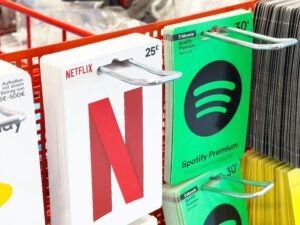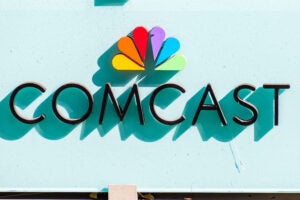 “Data Driven Thinking” is written by members of the media community and contains fresh ideas on the digital revolution in media.
“Data Driven Thinking” is written by members of the media community and contains fresh ideas on the digital revolution in media.
Today’s column is written by Dina Zelikson, Digital Program Manager at Bluestem Brands.
Few in the ad industry would deny these trends: RTB-eligible inventory growth is meeting with rising advertiser spending in programmatic; the potential to harness data via new technology and system integrations is augmenting ad relevance; and the growing presence of new media formats like video and mobile is fueling additional investment in the RTB space. Also, advertisers and publishers alike recognize the opportunities for increased efficiency in the programmatic direct realm. Momentum is pushing the industry forward with programmatic display.
Embedded in the many areas of consensus, however, lies a major point of disagreement. The reality is that programmatic direct (auto-traded direct sales) and programmatic guaranteed (private exchange and reserved) remain an emerging space. The majority of auto-traded inventory continues to live within the realm of open RTB. And the question that gives rise to some contention is “Are both sides of the industry equally equipped to benefit from the rising trend of programmatically traded media?”
Asking The Right Question
This question, while incredibly compelling, is somewhat misleading. It projects the current state of the industry onto the as-yet undefined future. While the challenges are many, they’re not all equal in priority for the publisher side. The risk of concentrating attention on the wrong issues is a future where individual publishers disproportionately benefit from programmatic, leaving too many losers and, consequently, an unconstructive sense of pessimism.
Are sellers and buyers benefiting from programmatic on an equal basis today? No, mostly they are not (the benefits aren’t even spread uniformly among publishers; some publishers are seeing significantly higher revenue lifts from programmatic than others). Does the capability exist to benefit both sides evenly? Yes.
Top Priority: Solving The Tech Challenges
To reach that potential, the top priority should be tackling the most pressing technology obstacles preventing large-scale adoption of programmatic guaranteed today. One of the main examples is the challenge of integrating publisher monetization stacks in an exchange-agnostic manner. Additionally, multi-bid protocol – a requisite for raising liquidity in the preferred and private exchange marketplace – is often hampered by logic errors on the buy side and must be fixed to operate effectively. These significant limitations must be addressed to allow publishers to drive revenue from programmatic display outside of open RTB.
Invested players like the Rubicon Project are taking on the multi-bid protocol challenge by working with buying platforms to smooth out the kinks. The likes of OpenX and Google’s AdX offer more seamless solutions, but those solutions are specific to the exchange, as well as to publisher utilization of the corresponding ad-serving platform (not an issue for DoubleClick).
Examining Publishers’ Concerns
AdExchanger Daily
Get our editors’ roundup delivered to your inbox every weekday.
Daily Roundup
Few publishers believe the playing field is level, while most buyers have either not formed an opinion or believe that both sides are fairly positioned. According to a recent survey conducted by OpenX, only 25% of publishers believe that programmatic benefits both sides equally. Among their concerns: Buyers overlook context in favor of audience, and – because buyers set the price –publishers end up ceding price control and releasing inventory at a disadvantage.
If buyers truly biased the importance of context over audience, the evolution of programmatic to enable placement transparency and control wouldn’t exist. When it comes to prospecting campaigns, context cannot be extricated from audience. Yes, first-party data made available through programmatic enables a marketer to aptly define an audience, but the delivery of advertising to the right audience in the right environment is crucial to breaking through the clutter. The same concept applies to performance marketing and retargeting tactics. Without that relevance, the alternative is to make the advertising message ubiquitously present and/or bang users over the head until they respond. But let’s face it, that’s neither a good brand experience nor a cost-effective tactic.
The concern regarding audience bias over context is, nonetheless, a valid one. Audience is in fact prioritized over contextual precision in the open RTB environment. I don’t think, however, that this is reflective of the marketer mentality. Rather, it is a product of the current situation. It’s important to acknowledge the buyer intent to control for context alongside the audience. They will, as the buy side gains the ability to control for both of those factors within the programmatic-guaranteed space at large scale. I will add that the onus to lead the conversation in a way that recognizes contextual value lies with the marketers, particularly as it relates to direct-response media.
Other Challenges Will Be Solved In Time
Lastly, I want to address the concern over who holds the reins of price control. In a future of functioning cross-monetization stacks and widespread adaptation of multi-bid protocol, the bidder who fails to see the value of inventory when it is present will lose valuable ad space. And because multi-bid protocol will raise programmatic market liquidity, buyers who bid higher for context and/or a niche audience will have a greater chance to win those bids.
Within programmatic guaranteed, publishers directly negotiate the price of inventory. If marketers want to compete for that inventory, they will have to do so on mutually negotiated terms. Additionally, when programmatic guaranteed becomes more mainstream, the number of bids that command higher CPMs will increase in both the guaranteed and the open environment.
Bid protocol aside, I see two trends that will make this impact in the long term. Increasing placement transparency in ad exchanges will let buyers evaluate content relevancy and factor it into their bid strategy on a more frequent basis. Also, programmatic trends will constrict inventory available in open RTB, thus normalizing the current supply-demand imbalance and raising open auction prices. If mobile and video inventory become available via the same buying and ad serving platforms – which I think will happen in programmatic’s next phase – that will further solidify the course to higher CPMs in programmatic display.
Follow Dina Zelikson (@DZelikson) and AdExchanger (@adexchanger) on Twitter.













